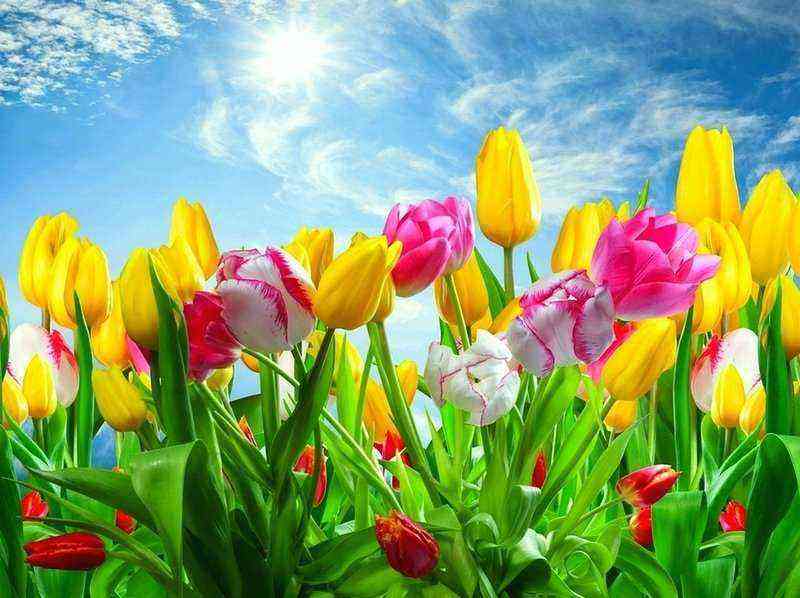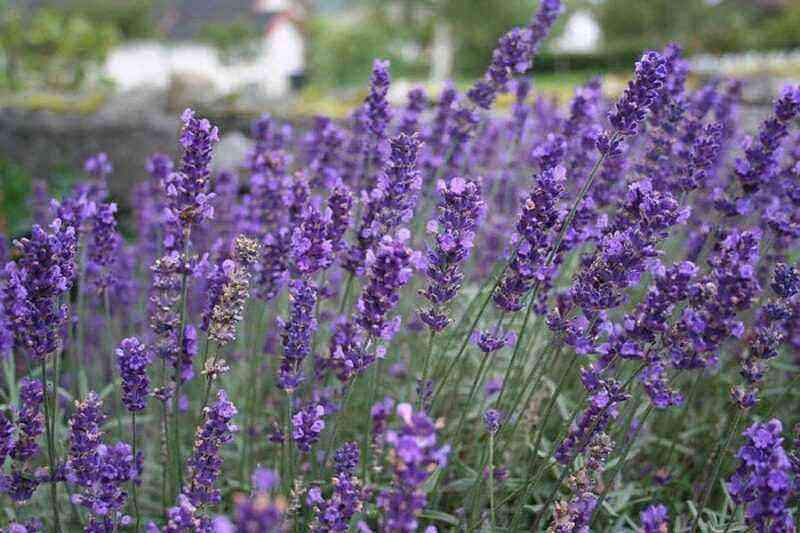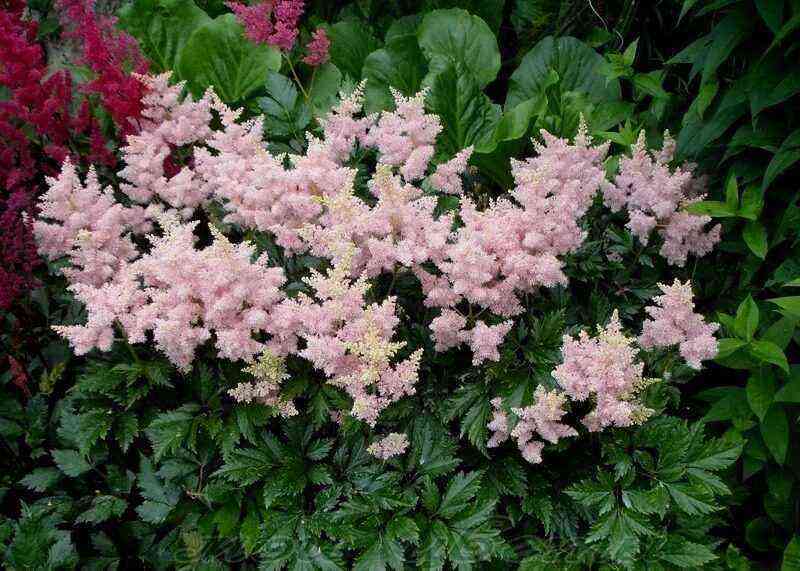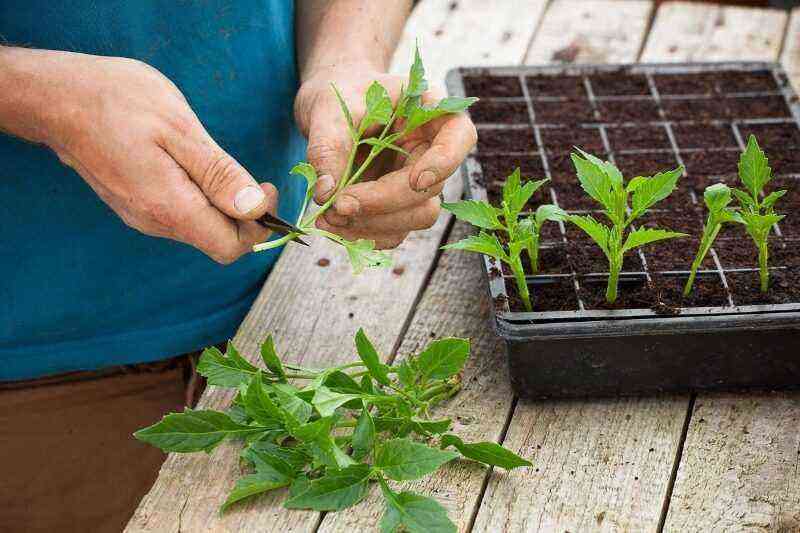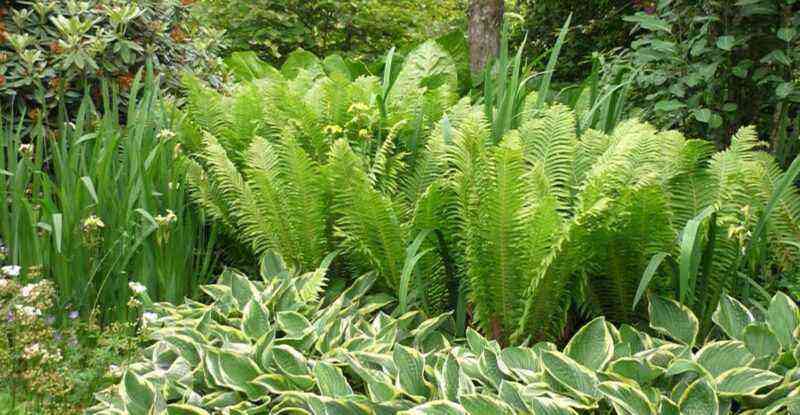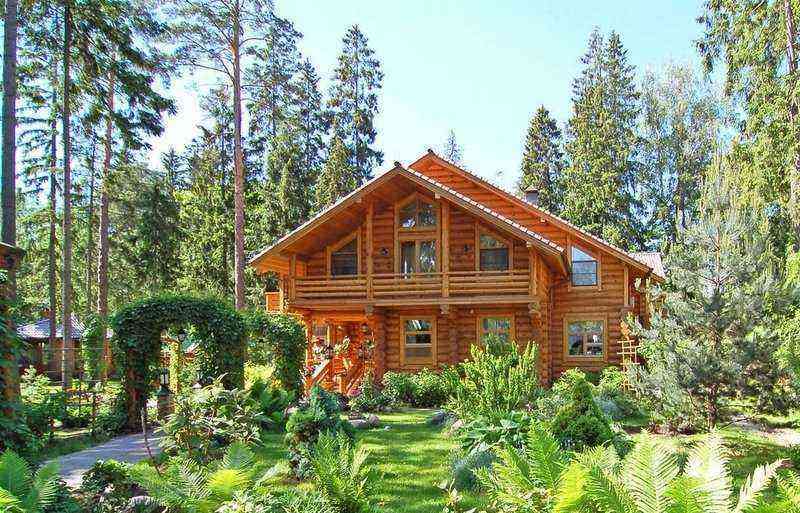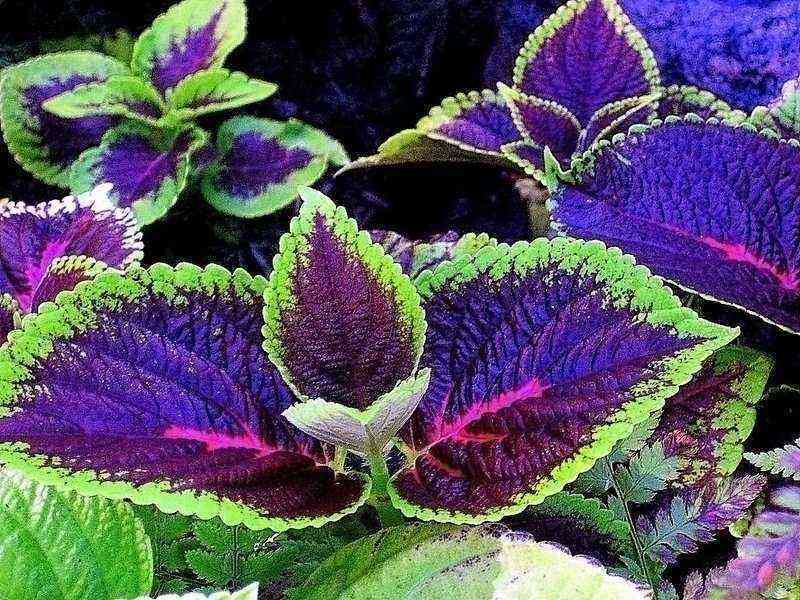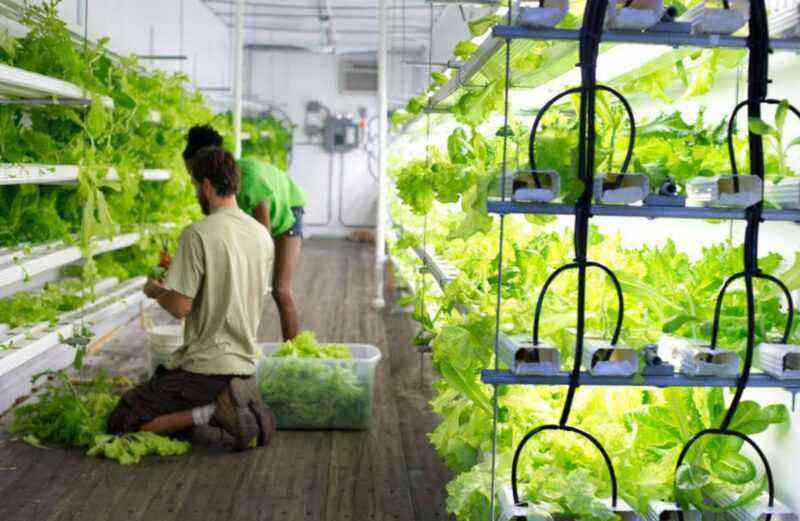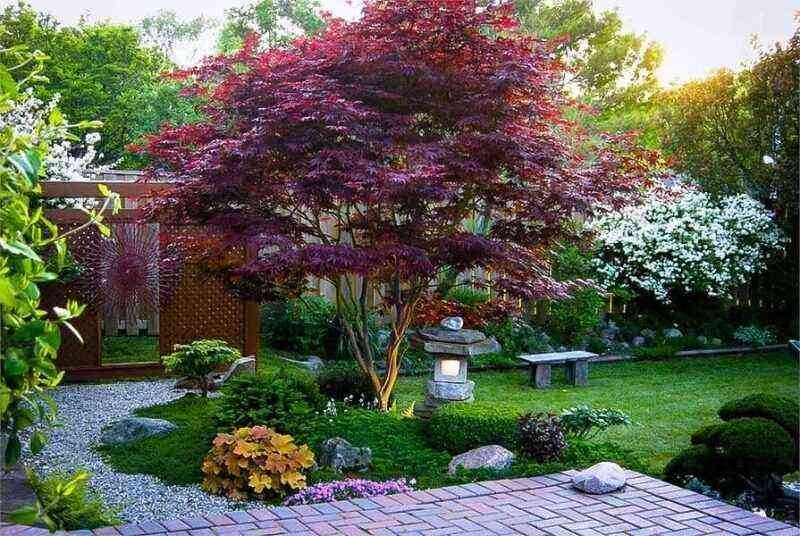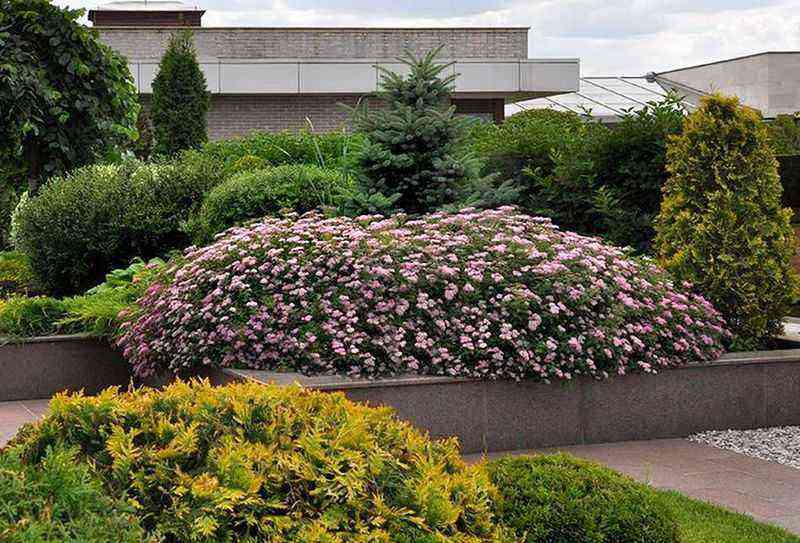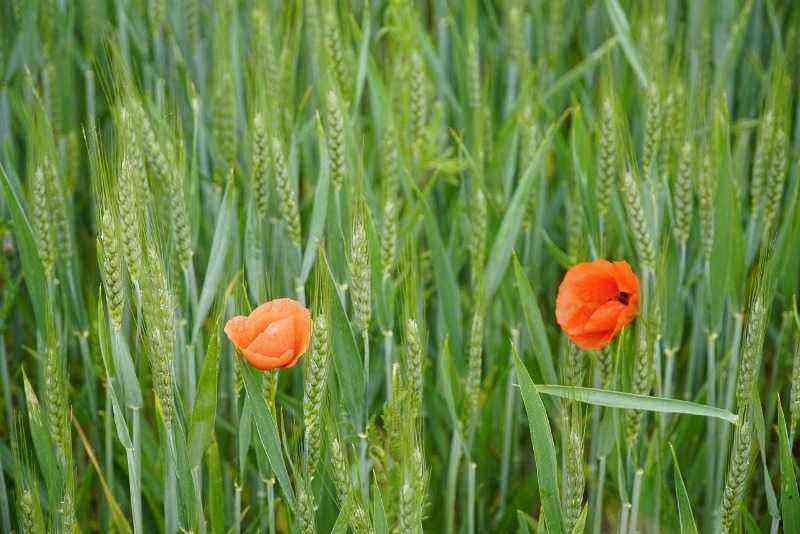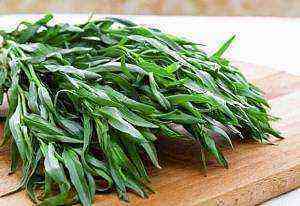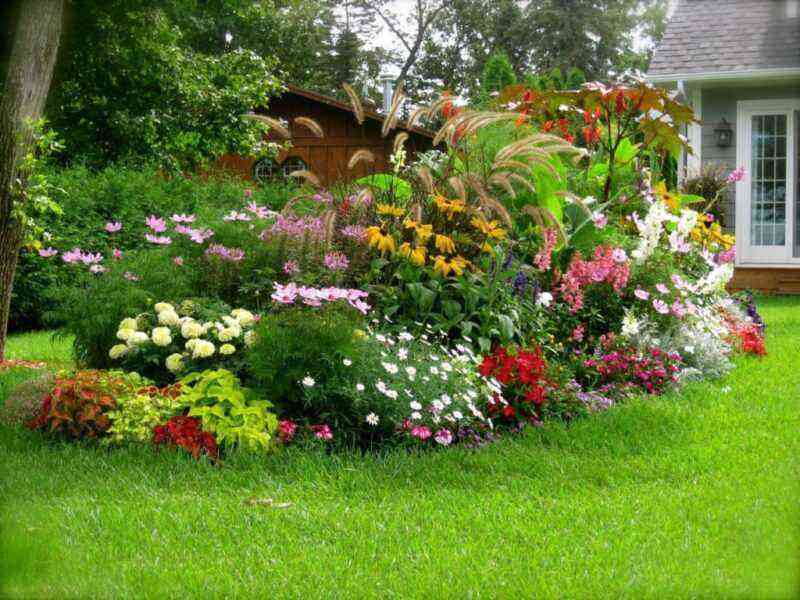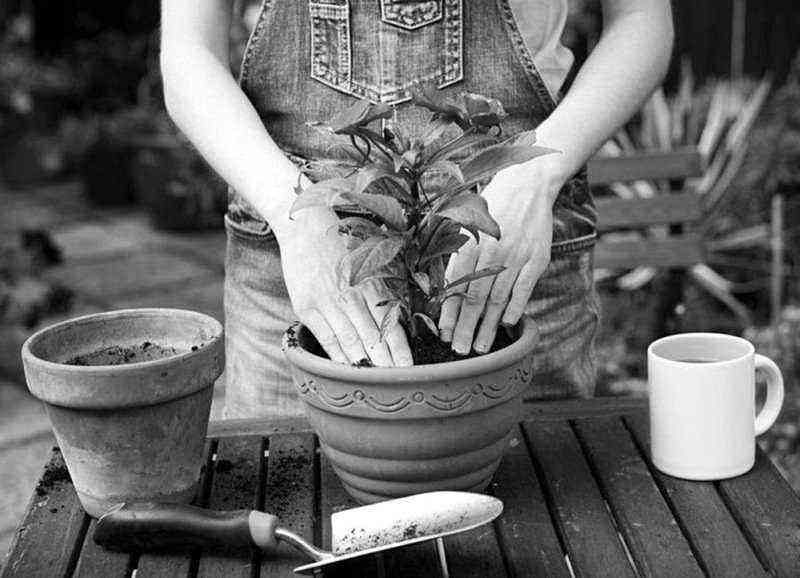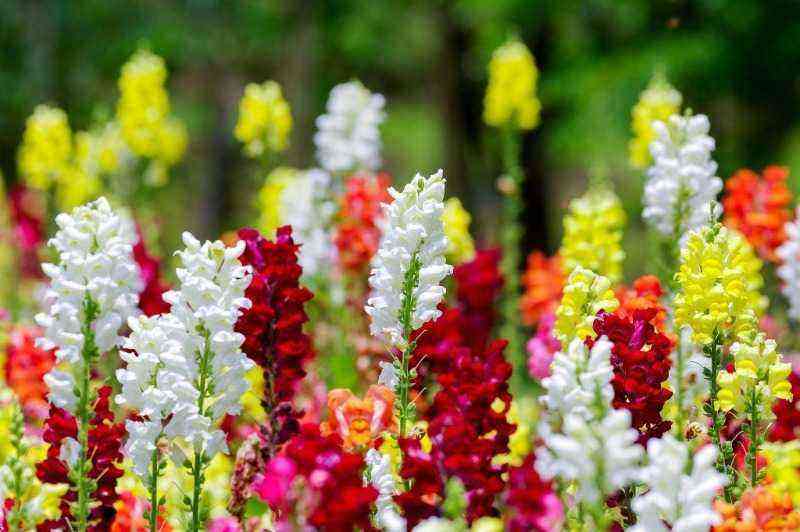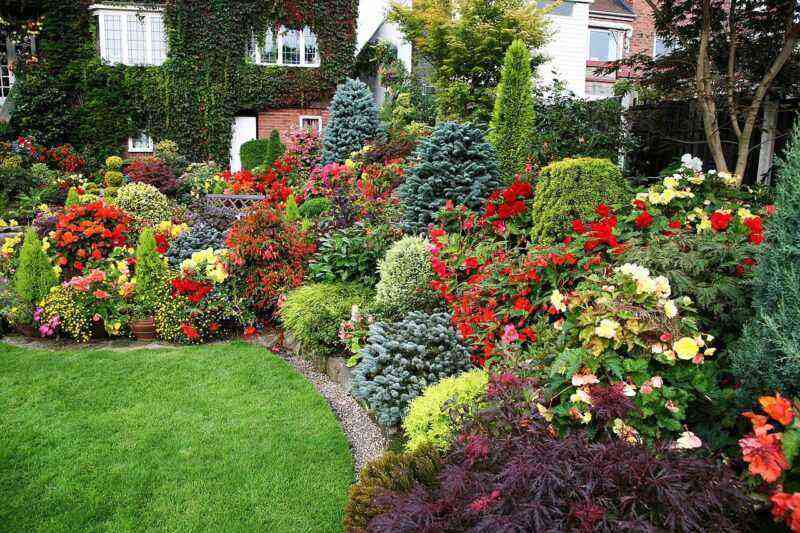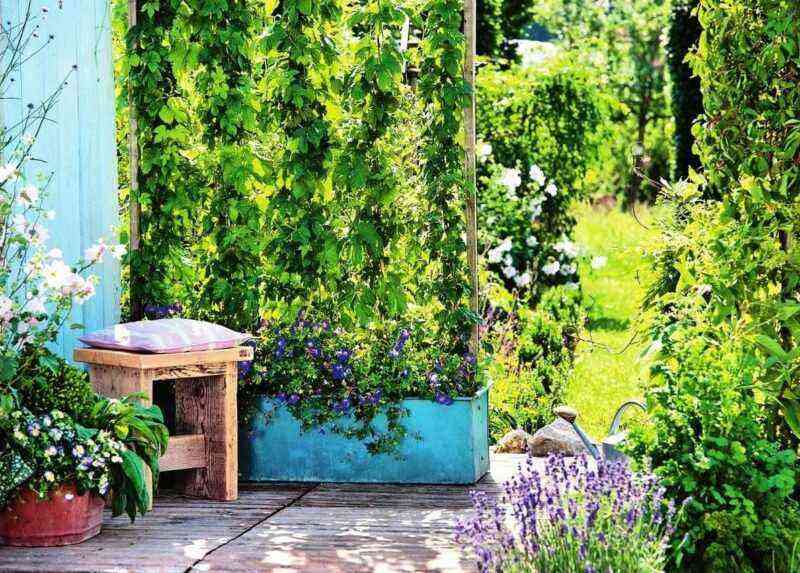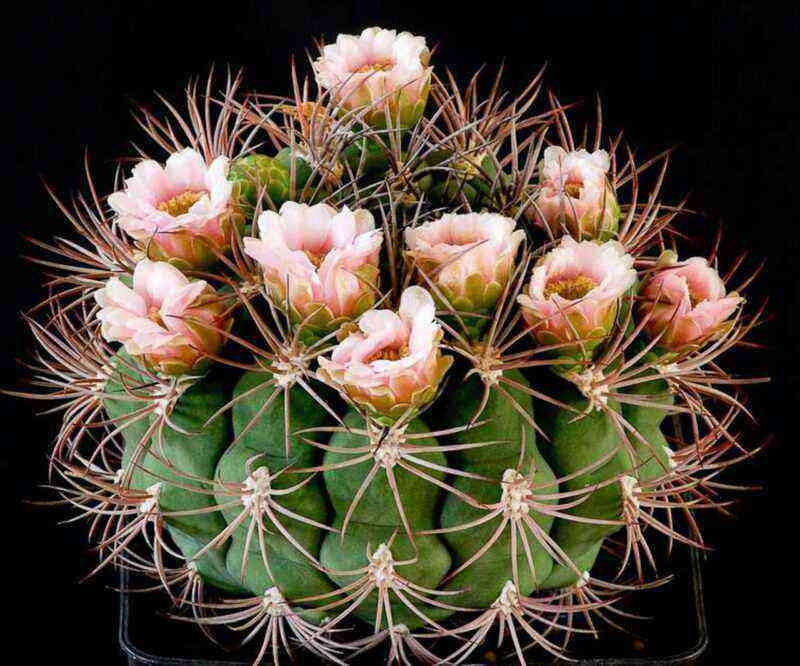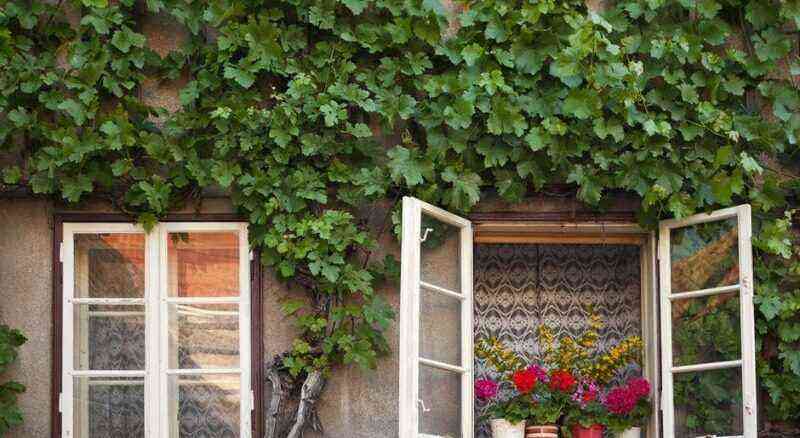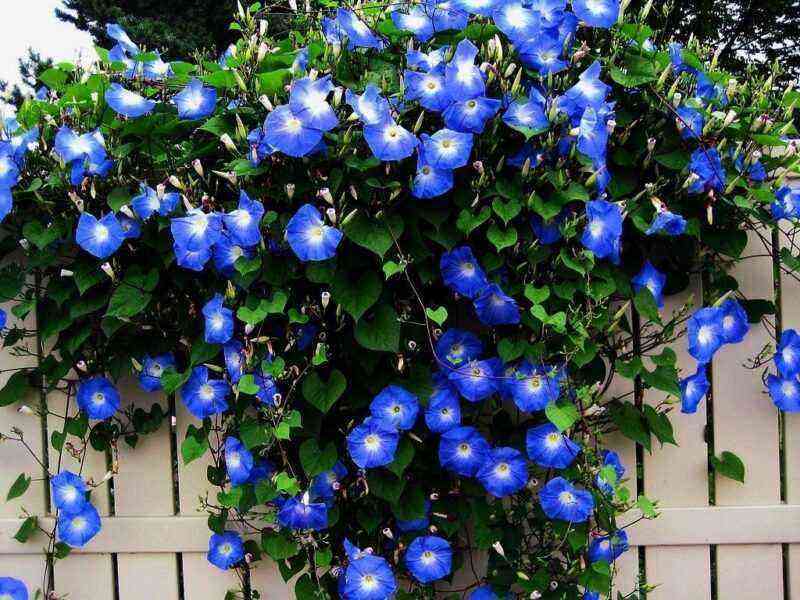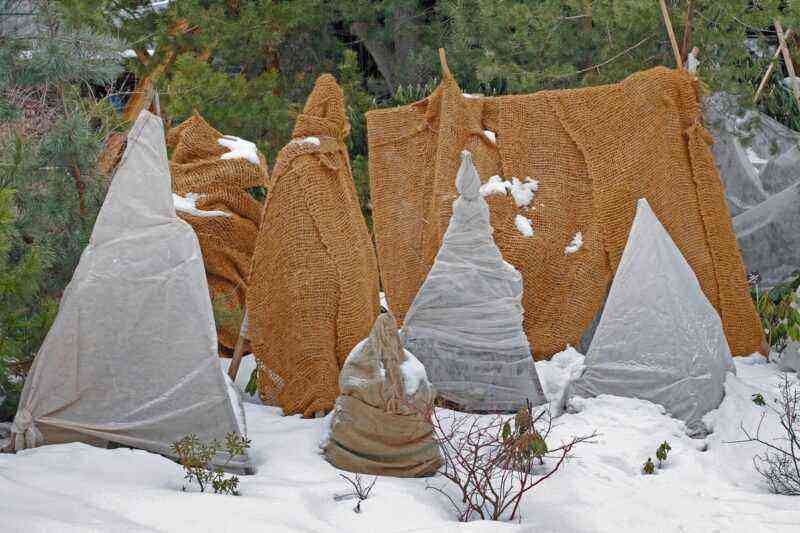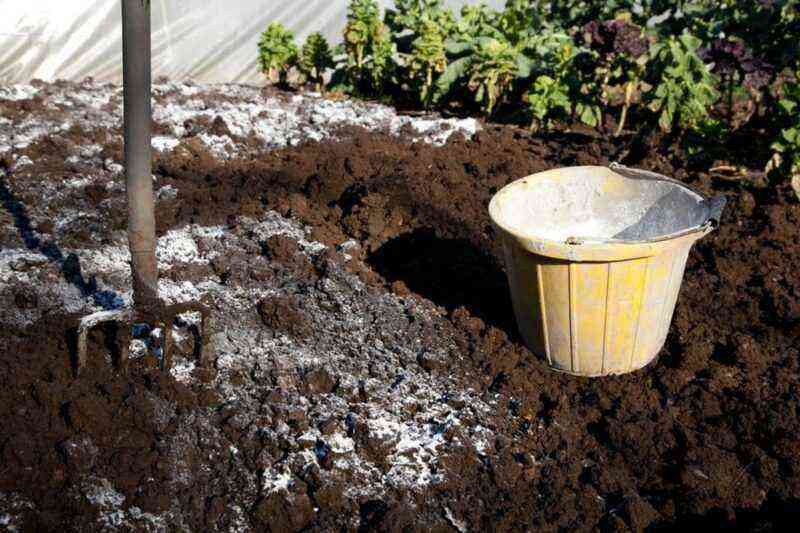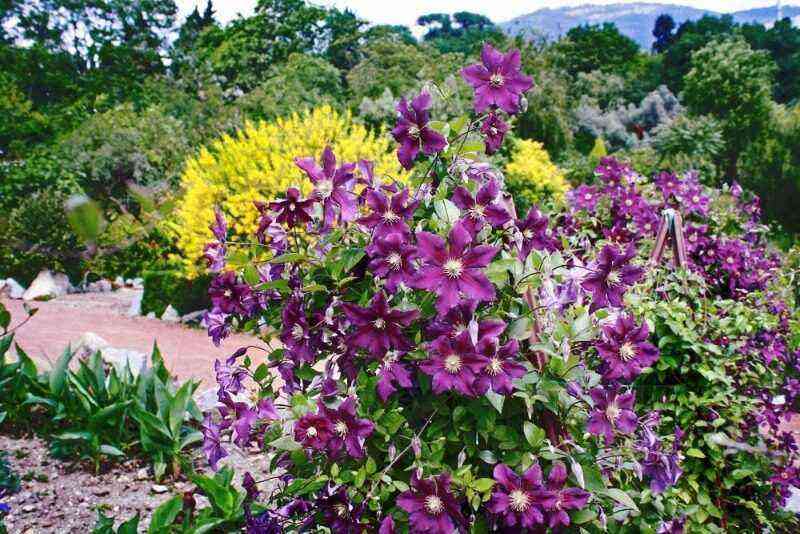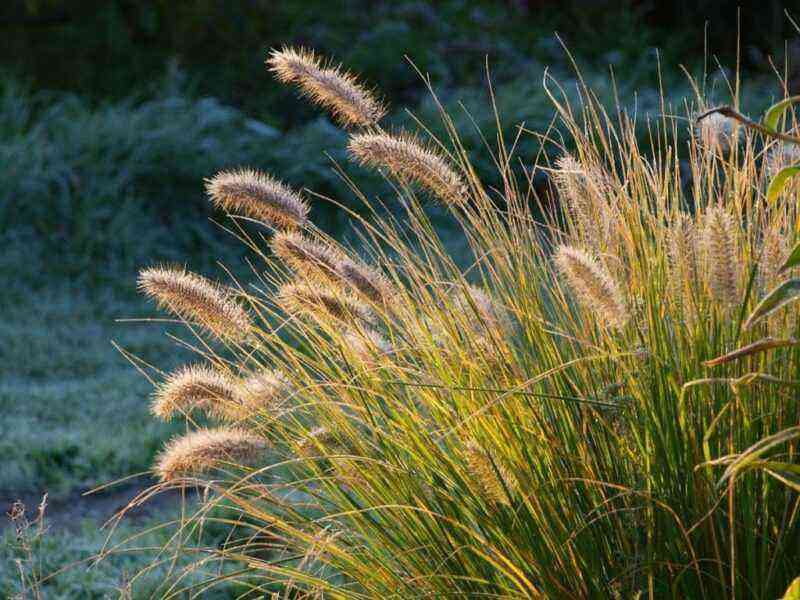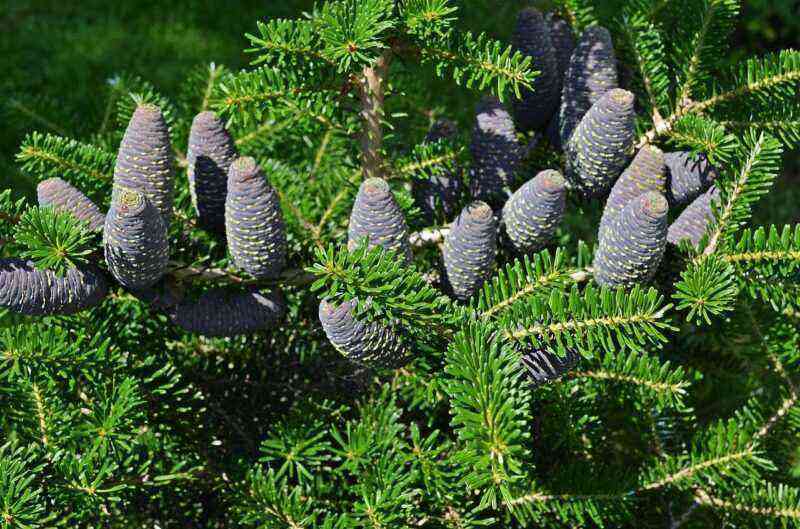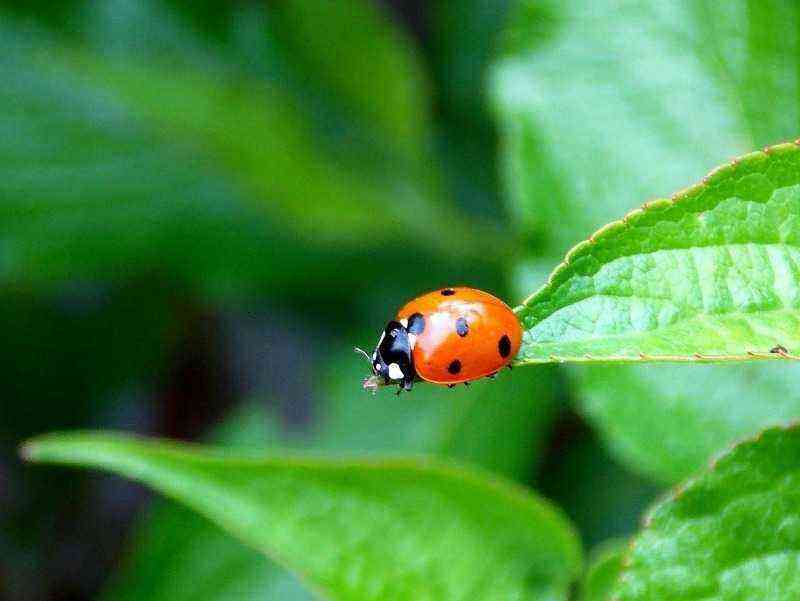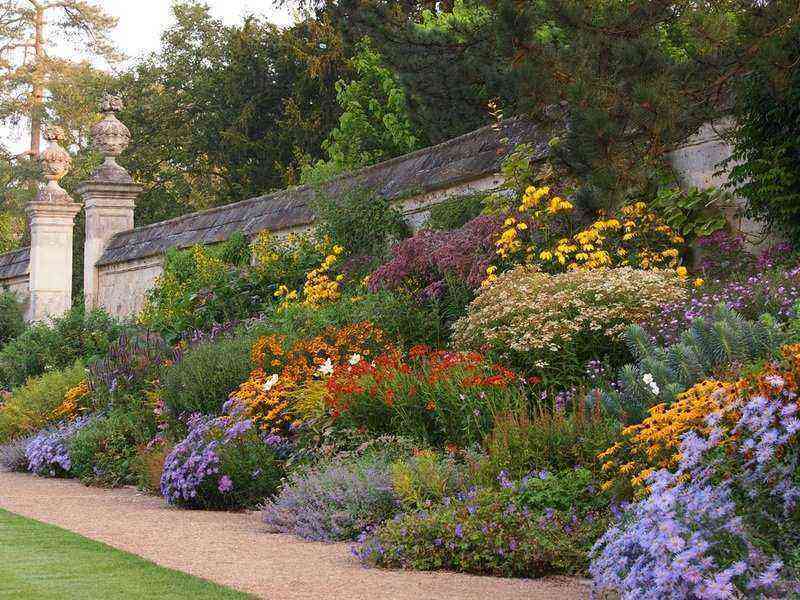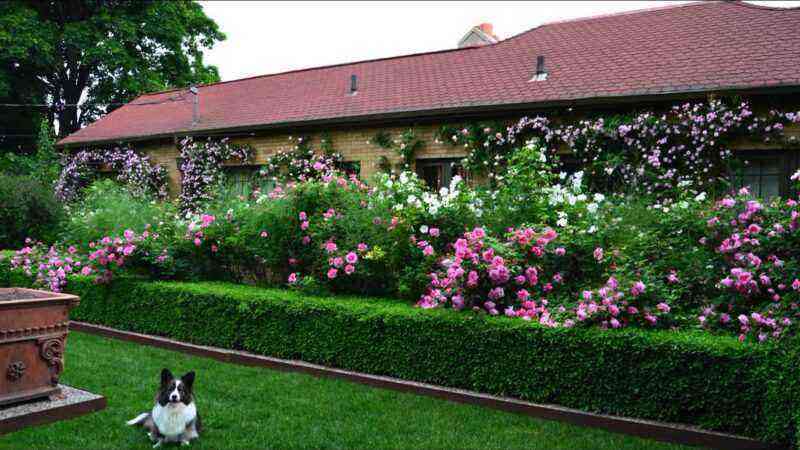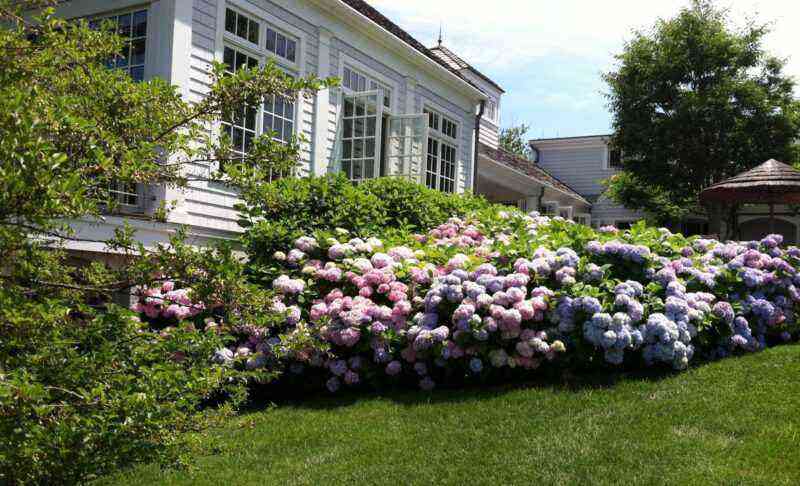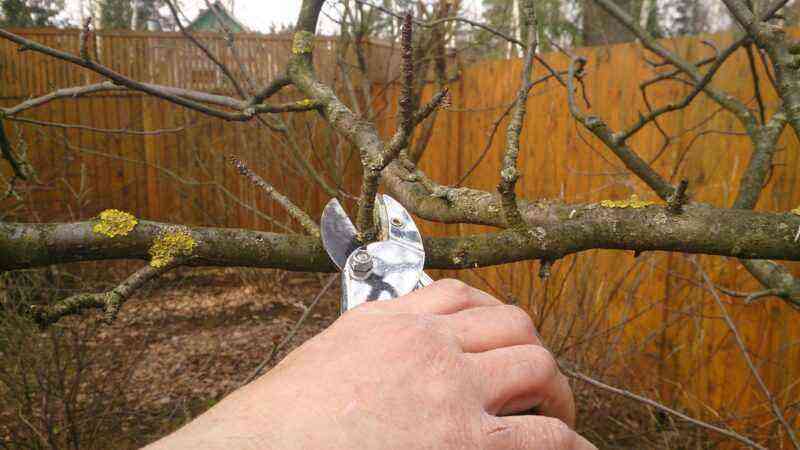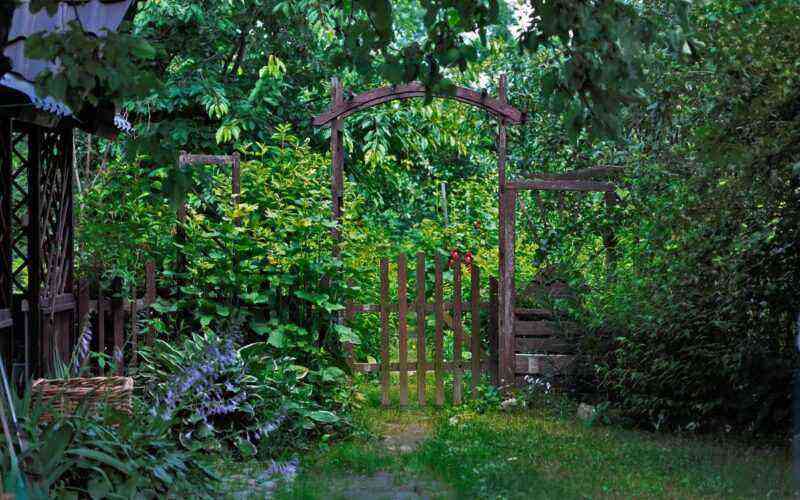A rare owner has no flower beds on the site. Flowers unrecognizably transform the local area, even if the outbuildings on it do not look particularly presentable. Often a dull area in the autumn-winter period with the beginning of the flowering season is simply not recognizable, so flowers are able to decorate and change it. The easiest way to decorate a garden and courtyard is to plant flowers in no particular order, but if you use patterns for planting flower beds, even the simplest ones, the garden will sparkle with special colors. Each flower has its own melody, just like each note, and with a good arrangement, your flower “orchestra” will convey positive and harmony to both the courtyard and the garden.
A flower bed, for the formation of which only annual flowers are used, will turn out to be very bright and colorful. If you are not too lazy to plant plants every year (and you only need to do this once a year), you can create simply magical flower combinations.
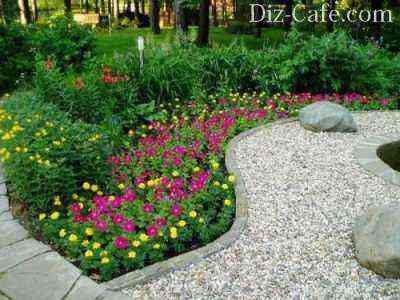
A flower bed along a winding path of petunias and marigolds. Tall plants, lilies are planted in the background. These flowers are unpretentious, and the corner of the garden is very picturesque.
What kind of annual flowers are good for creating flower beds? There are many of them. Unpretentious, beautifully flowering plants that can be used to create a flower garden of annuals are varieties of balsam, tuberous begonia, ever-flowering begonia, comb and feathery cellosia, salvia, ornamental sunflower, dahlias, snapdragons, petunia, zinnia, nasturtium, cosmea, lobelia, verbena, different varieties of marigolds (togetis), viola (pansies), avitarum. The flowerbed will also be decorated with herbaceous ornamental plants – perilla, cycenaria, kochia, coleus, etc.
Among such a variety, there is something to choose from. A beautiful flower bed will turn out if you opt for cosme and snapdragons of various colors – planted in no particular order, these flowers will create a flower bed in the manner of a Moorish lawn, delighting with both delicate and rich shades. Cellocy will help to place bright accents in the right places – in the middle of the flower bed, on the sides, in the back.
You can learn more about how to choose annual flowers for subsequent planting on a flower bed in the material:
A bed of annuals can be either squat or composed of tall plants. Phlox, delphinium, bells, amaranths belong to tall annuals.

Kosmeya is a tall meadow beauty. Usually it is planted in combination with other flowers. But appreciate how good the cosme hedge with begonia border is
Several simple options for the arrangement of flowers in a flower bed:
- a combination of squat flowers with a composition of tall plants in the center (for example, balsam, ever-flowering begonia and bells or delphinium);
- edging of flowers of the same type (the option is good for a round flower bed – marigolds along the edge and snapdragons in the center);
- a parterre of undersized flowers and a background of taller ones.
A few examples of ready-made flower garden schemes from annuals:
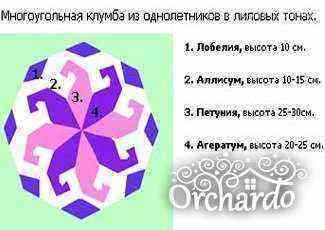
The scheme offers the option of creating a beautiful regular flower bed of annual flowers in lilac tones. Choose the matching shade of petunia, lobelia, allicium and ageetarum.
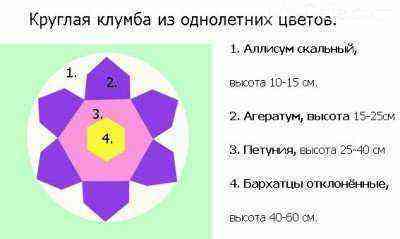
A simple scheme of a regular flower bed of annual flowers, designed for a round flower bed. It uses 4 types of annuals – petunia, marigolds, allisium and ageetarum
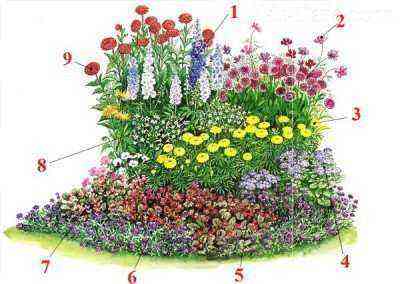
Flowerbeds for butterflies: 1 – delphinium, 2 – cosmea, 3 – marigolds, 4 – Houston ageratum, 5 – ever-flowering begonia, 6 – verbena, 7 – petunia, 8 – Sander tobacco, 9 – dahlias. All flowers are annuals, excluding delphinium
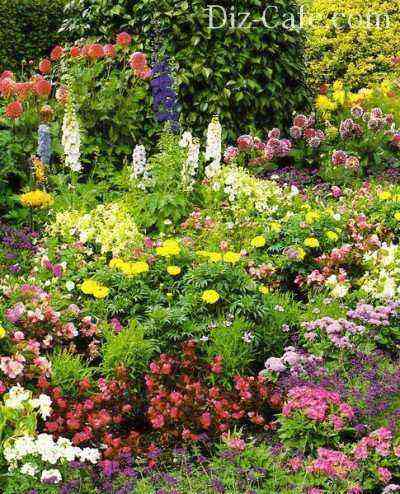
Fragrant flowers always attract butterflies, whose flutter over the flower bed evokes positive emotions. An example of creating a beautiful irregular flower bed of a variety of flowers
A bed of perennial flowers requires care, although they do not need to be planted annually. Overgrown plants need to be planted, pruned, dry leaves and shoots removed, and weeds removed.
The first among perennials to bloom are bulbous – hyacinths, tulips, daffodils, irises. The first grass has just appeared, and their delicate leaves, shoots and flowers paint the garden with festive colors. A flower bed made up of bulbs is great anyway, no matter what flowers you use. The woods will be the first to hatch, then the time will come for hyacinths, muscari, daffodils and tulips. For a flower bed, you can only use flowers of the same type – for example, varietal tulips.
A selection of the best varieties of bulbous perennials will also be useful:
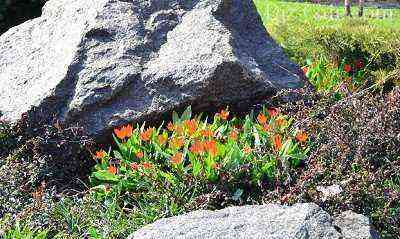
Get creative. If you find a couple of large boulders, place them in the garden. Such a fragile beautiful composition can be made by planting varietal tulips between them
But the combinations of bulbs also look very good – you can plant tulips and daffodils in rows, beautifully combine the delicate blue of muscari with groups of solid or colored tulips. Plant several hyacinths of different colors in a small area – you will see what a wonderful corner it will be. Don’t forget the irises – these are royal flowers. If possible, plant irises of different colors in rows, or using flowers of different shades in a round flower bed. For example, purple at the edge, fawn in the center.
Bulbous ones quickly fade, after them primroses bloom almost immediately. These are unpretentious flowers with a rich palette, we advise you to use them to create a flower garden. Ready-made flower garden schemes from perennials will allow you to create luxurious flower beds that will delight you all summer:

Such a flower bed is good because it can be arranged both in the shade and in the sun. Boulders look good in the company of irises and astilba

To create this flower bed of perennials, you will need the following flowers – background: 1 – stock-rose, white, red, yellow, 2 – ten-petalled sunflower, 3 – Icelandic poppy, 4 – odorless St. John’s wort, 5 – Cardinal lobelia, 6 – Fassen’s catnip, 7 – Poskharsky’s bell, 8 – blue katananche, 9 – gravilat ‘Feuerbal’, sedum ‘Matrona’ blooms in autumn – 10, 11 – blood-red heuchera. The combination of yellow, shades of blue and blue, red
You can create a flower bed exclusively from annuals and perennials, but a flower garden of continuous flowering, where annual and perennial flowers are combined, will give you no less joy. Annuals can be used after perennials (eg bulbs) have faded. They will cover the vacant space in the flowerbed. The choice of flowers reflects the preferences of the owners, if you like bright flower beds, you may also like this option for a mixed flower bed.
You can learn more about how to create a continuous flowering flower bed from the material:
A flower bed of bright flowers:
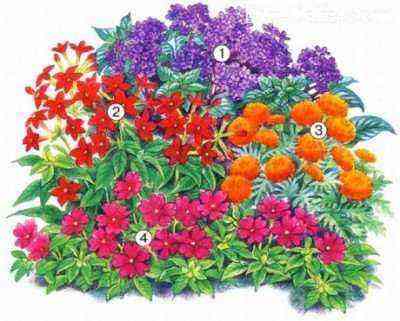
Mixed flower bed of bright flowers: background, 1 – tree heliotrope, 2 – Sander’s tobacco, 3 – double marigold, orange, 4 – parterre, pink New Guinea balsam
Flower illusion – a flower garden around a dry stream:

Plants planted along the “banks” of a dry stream enhance the illusion of the presence of real water, looking at such a composition, a feeling of dynamics is created. 1 – leaf grate bamboo, 2 – hybrid iris, 3, 4 – lobelia, 5 – downstream Poskharsky’s bell, 6 – hybrid aubrieta, 7 – large-leaved brunera, 8 – awl-leaved bryozoan will add delicate greenery, 9 – red creeping tenacious
This is a couple of schemes that allow you to create continuous flowering flower beds without spending a lot of effort. A bright flower bed will attract eyes, delight with colors, and a composition by a dry stream will create a feeling of movement, coolness and freshness. This is especially true if you do not have a reservoir on the site.
Flower and bed patterns can be ordered (a regular bed where plants are planted in a specific order) and irregular. Irregular flower beds are good because you can plant whatever you like on them – flowers with different flowering periods, perennial and annual, as well as ornamental shrubs and dwarf trees. Dwarf willow, thuja, juniper, ornamental cereals will go well with any flowers, the impression of such a flower bed is different – this corner of the garden looks more natural.

